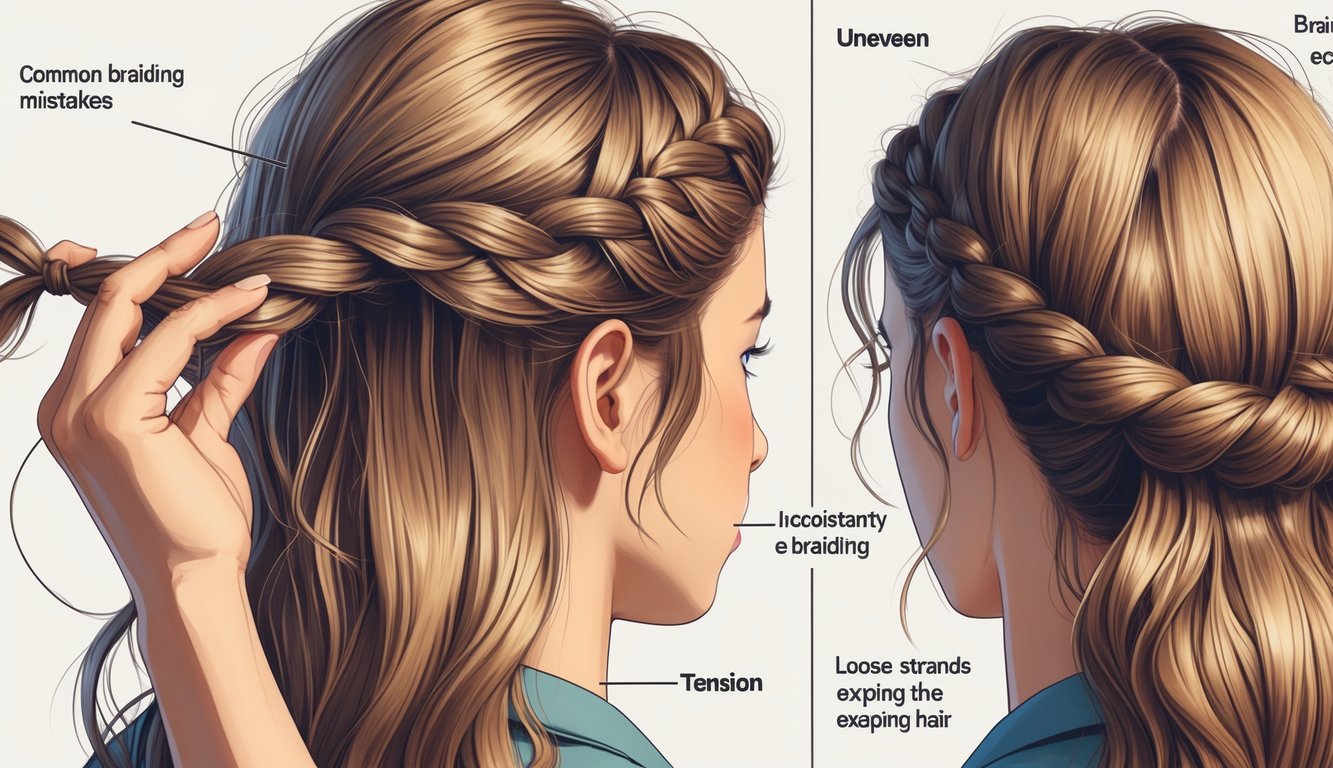
The Dangers of Tight Braiding
Let’s be honest: tight braids don’t last longer, they just hurt more and ruin your scalp. Every time I see those shiny bumps after someone pulls too tight, I cringe. Nobody talks about the long-term mess—hair loss, infections, all that.
Traction Alopecia Risks
Edges snatched, temples throbbing—why do people act like that’s a flex? Tight braids yank your follicles, and no, you don’t “get used to it.” Skip scalp care, and those little white bumps show up—mini SOS signals. Dermatologists say, “tight braids inflame follicles, cause scarring, and can lead to permanent hair loss.” So much for healthy hair.
I’ve seen clients beg for aloe or ice packs. Ignore the pain, and traction alopecia sets in fast. Sticking a comb under tight braids helps for five minutes—then you’re back to suffering (and scalp care guides say the same). Someone tried frozen peas once. Didn’t work, but hey, TikTok.
Long-Term Hair Health Consequences
Sores, redness, flakes—seen it, lived it, and edge control doesn’t hide the damage. If you keep braids too tight for weeks, you’ll thin your hair and break it off, especially if it’s fine or you keep restyling. Bacteria and fungus love living under there, making infections way more common than you’d think for a “protective” style (see the science).
Trying to make a hairstyle last longer than it should? Dermatologists say you’re just inviting inflammation, scarring, and maybe a receding hairline. Keep braids loose, talk to your stylist, and don’t be afraid to take them out. I saw someone double-knot every row for “security,” then come back a week later with sores that needed a doctor. All for a style that was supposed to last. Not worth it.
The Role of Hair Maintenance in Braided Styles
Woke up to static and frizz again—thought the silk scarf would save me, but nope. The difference between braids that last for weeks and ones that fall apart by Sunday? If you skip maintenance, it all goes downhill fast: itching, breakage, frizz multiplying like it’s on purpose.
Frizz Control Strategies
Okay, let’s talk frizz—because apparently, it’s my destiny. I start with these crisp braids, feeling smug, and then, boom, there’s that fuzzy halo mocking me by day three. Mousse is supposed to help, right? That’s what the internet and every stylist ever keep saying. Eh. I slap some on, but if I forget and sleep on a cotton pillowcase (which I do, like, always), it’s game over. Microfiber towels? I own two. I never use them. Regular towel, instant frizz, every single time.
Dry oil sprays? Sometimes I feel like I’m marinating my hair instead of styling it. Edge control gels flake on me, and then I look like I rolled in powdered sugar. I’ve tried lightweight leave-in conditioner, but if I get too generous, the extensions just start sliding around like they’re trying to escape. Even the pros at braidifye say you need to moisturize, but not drown your roots. “Just enough”—what does that even mean? I still have no idea.
Night routine: satin bonnet or silk scarf, religiously, every night. That works. Sort of. Sometimes I add a little shine spray, but only if I remember. Those “all-day” anti-frizz serums? For me, they last about two hours, tops. The only thing that really works? Not touching my hair all day. Which is, honestly, kind of impossible.
Scalp Care With Protective Styles
Here’s what I don’t get: why does my scalp feel like it’s in a vice for two days, and then suddenly it’s snowing flakes? Is that normal? Supposedly, yes. When my hair’s braided, it’s not like I can just wash it whenever I want. Dermatologists—like Dr. Hope Mitchell, who I trust because she seems to know her stuff—say scalp oils are fine, but moderation is key. I, of course, overdo it, and end up with blocked follicles and regret.
Diluted shampoo in an applicator bottle is a pain, but if I skip it for more than a week, my scalp starts plotting against me. I’ve timed it—7 to 10 days is the sweet spot. Ignore your scalp, and you’ll pay. Black Hair Spot says so, and my own summer breakouts back that up.
Tea tree oil (diluted, unless you want a chemical burn—ask me how I know) helps with the itch. I always think I can skip checking my scalp, and then, surprise, I’m picking out buildup and scratching at angry red bumps. Every. Single. Time. You’d think I’d learn.



